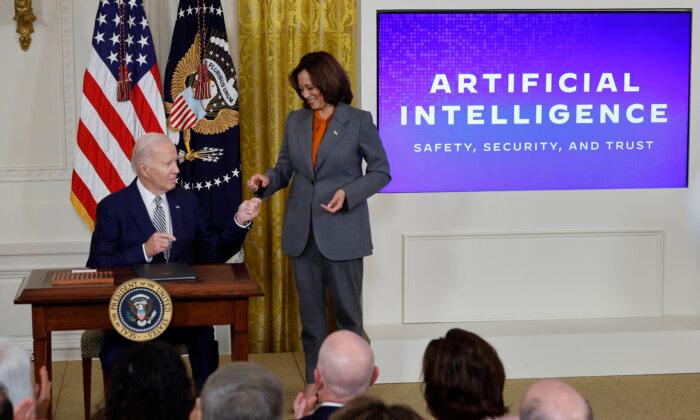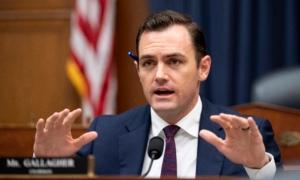President Joe Biden signed an executive order on Oct. 30 detailing a comprehensive strategy to support the responsible development of artificial intelligence (AI) while protecting the public from the dangers it poses, marking a major step toward addressing the mounting risks of AI.
The executive order sets new standards for AI safety and security, protects Americans’ privacy, promotes equity and civil rights, and advocates for consumers and workers, according to the White House. It also aims to encourage innovation and competition while bolstering U.S. leadership in this field.
“To realize the promise of AI and avoid the risk, we need to govern this technology. And there’s no other way around it, in my view,” President Biden said before signing the order at the White House.
While much of AI improves people’s lives, it may also make them worse in some cases, he noted.
“For example, using teenagers’ personal data to figure out what will keep them glued to their devices, AI makes social media more addictive,” President Biden said.
“Mitigating the risk of extinction from AI should be a global priority alongside other societal-scale risks such as pandemics and nuclear war,” reads a statement by the Center for AI Safety, a nonprofit organization.
The open letter was signed by more than 350 executives, researchers, and policymakers, including Sam Altman, CEO of OpenAI; Demis Hassabis, CEO of Google DeepMind; Bill Gates; and Rep. Ted Lieu (D-Calif.).
Key Aspects of the AI Executive Order
Establishing New Standards
The order requires the most powerful AI system developers to submit their safety test results and other key information to the U.S. government.The president is invoking the Defense Production Act, which the federal government utilizes in emergencies such as wartime mobilization or vaccine development during a pandemic. This executive order will use the same authority, requiring corporations to prove that their most powerful technologies are safe before using them.
That means that companies must inform the government about their large-scale AI systems and provide rigorous independent test results to verify they pose no national security or safety risk to Americans, according to President Biden.
As part of the order, the Departments of Energy and Homeland Security will work together to mitigate threats posed by AI systems to the nation’s critical infrastructure.
Protecting Privacy
AI makes it easier to gather, identify, and exploit personal data. Hence, the president has called on Congress to pass bipartisan data privacy legislation to protect all Americans, especially children, from the potential risks posed by AI’s use of personal data.Addressing Algorithmic Discrimination
The executive order recognizes the potential for AI to exacerbate discrimination and bias in sectors such as justice, health care, and housing and outlines measures to address algorithmic discrimination.Promoting AI Innovation
The order recognizes U.S. leadership in AI innovation and aims to maintain this position through initiatives, such as expanding AI research through a pilot of the National AI Research Resource or promoting a competitive AI ecosystem by providing small businesses access to technical assistance and resources.International Collaboration
The Biden administration will collaborate with other countries to establish a strong international framework for governing the development and use of AI.Increasing AI Talent
The executive order asks for a government-wide AI talent surge to speed AI adoption by accelerating the rapid hiring of AI professionals. Agencies will offer AI training to staff members at all levels in relevant fields.“I believe we have a moral, ethical, and societal duty to make sure that AI is adopted and advanced in a way that protects the public from potential harm and ensures that everyone is able to enjoy its benefits,” Vice President Kamala Harris said during the event at the White House.







